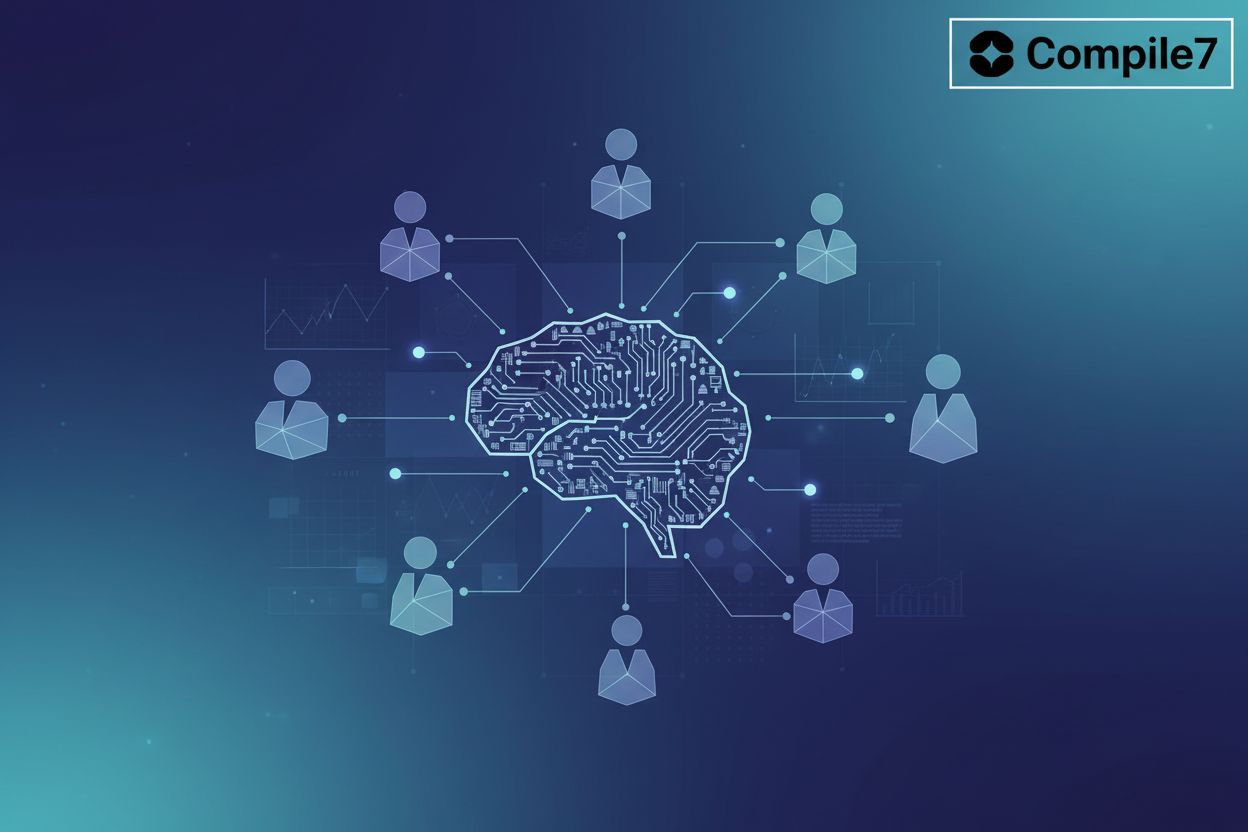How to Implement AI in the Classroom: A Useful Resource
TL;DR
Understanding the Potential of AI in Education
Okay, let's dive into the potential of ai in education, because it's not as scary as some folks make it out to be. I mean, sure, robots aren't gonna replace teachers anytime soon, but ai can definitely make life easier in the classroom – and maybe even spark some new ways of learning.
So, what's all the hype? Here's a quick rundown:
- Personalized learning: Think of ai as a super-smart tutor that can adapt to each student's pace and style. No more one-size-fits-all lessons!
- Teacher's little helper: ai can automate a bunch of those tedious admin tasks, like grading basic assignments. It can also help with things like drafting communications or even suggesting ways to organize your class schedule. The C.L.E.A.R. Youth Project, for example, shows how ai can streamline lesson planning, which is awesome for professors and can be adapted for K-12 teachers too. (Streamline Lesson Planning: AI Tools for Professors)
- Data whiz: ai can crunch student data to give teachers insights into how everyone's doing, highlighting areas where students is struggling. (39 Examples of Artificial Intelligence in Education)
- Creative spark: ai can help generate new ideas for projects, create interactive content that gets students excited about learning, or even help students explore different creative avenues. For instance, it can assist in generating story prompts, suggesting artistic styles, or even helping to draft outlines for creative writing assignments.
It's all about making learning more effective and engaging, and freeing up teachers to focus on what they do best: connecting with their students. Now that we understand the exciting possibilities of AI in education, let's explore how you can practically bring these tools into your own classroom.
Practical Steps for Implementing AI in Your Classroom
Okay, so you're thinking about bringing ai into your classroom, huh? Maybe you're picturing something outta a sci-fi movie. But, trust me, it's way more down-to-earth than that. I mean where do you even start?
- Start small, seriously. Don't try to overhaul your entire curriculum overnight. Think about using ai for brainstorming lesson ideas, or even generating quizzes. It's low-pressure and lets you get a feel for the tech.
- Grammar and writing assistants can be lifesavers. I mean, who doesn't love a little help with those essays? ai can offer feedback and suggestions on grammar, style, and clarity. This frees up your time to focus on the bigger picture: assessing the substance, critical thinking, and creativity of student work, rather than getting bogged down in minor errors.
- Visual aids are your friend. ai can help you whip up presentations that really grab attention. Think interactive charts, infographics, the works.
Don't be afraid to experiment with a small group of students first. This lets you work out any kinks before unleashing it on the whole class. Plus, you get valuable feedback from the students themselves.
Think about it: you could use ai to create different versions of a worksheet, each tailored to a student's learning style. For example, you could prompt an AI like this: "Create three versions of a worksheet on fractions for 4th graders. Version 1 should use visual aids and real-world examples. Version 2 should focus on word problems. Version 3 should be a more direct practice of calculation." Or, maybe use it to generate personalized feedback on a project. You could ask: "Provide constructive feedback on this student's essay about the water cycle, focusing on their explanation of evaporation and condensation, and suggest one area for improvement in their use of scientific vocabulary." The possibilities are kinda endless, honestly.
And Washington's Office of Superintendent of Public Instruction (OSPI) is championing AI to be used in ways that respect and uplift the human dimension in education. This means empowering teachers to utilize AI as a responsible and transformative tool, not a replacement. For instance, OSPI's guidance might suggest using AI to generate differentiated practice problems, freeing up teachers to provide more individualized human support and feedback, or to help students develop critical thinking skills by analyzing AI-generated content.
Addressing Ethical Considerations and Policy Frameworks
Alright, so we've talked about getting ai into the classroom, but what about keeping it ethical? It's a seriously important question.
- Data privacy is HUGE. We're talking student data, folks. Schools need strict measures to protect that, like, yesterday.
- Actionable Example: Implement clear data usage policies that are shared with parents and students. Ensure any AI tools used have robust privacy settings and that student data is anonymized or pseudonymized whenever possible. Regularly review vendor privacy policies.
- Bias in AI? Yeah, it's real. You can't just assume these AI tools are neutral. Critically evaluate everything, promote diverse perspectives--it's on us to make sure things are fair. Teachers can do this by discussing how AI models are trained on data, and how that data might reflect existing societal biases. Encourage students to critically analyze AI outputs for underrepresentation or stereotypes, and to seek out diverse sources to cross-reference information.
- Actionable Example: When using AI for content generation or assessment, critically examine the output for any signs of bias (e.g., stereotypes, underrepresentation). Encourage students to question AI-generated information and to seek out diverse sources. Use AI tools that allow for customization and bias mitigation.
- A responsible AI policy is a MUST. Clear rules for students and teachers? Absolutely. Consequences for misusing AI? You bet. Gotta keep up with the tech, too, so the policy doesn't get outdated fast.
- Actionable Example: Develop a clear, accessible AI usage policy that outlines acceptable and unacceptable uses for both students and teachers. This policy should be reviewed and updated regularly to reflect advancements in AI technology and evolving educational needs.
It's about using ai responsibly, not just because we can, but because we should.
AI Across Different Subjects and Grade Levels
Alright, so, how does ai actually fit into different subjects and grade levels? Like, can you really use the same ai tools with a kindergartner as you do with a high school senior? Spoiler alert: absolutely not.
- Early Childhood Education (Pre-K): For the youngest learners, the focus is on foundational understanding and playful exploration. AI can be introduced through simple, interactive games that teach basic concepts like sorting or pattern recognition. It's crucial here to emphasize the "artificial" nature of AI. Washington's Office of Superintendent of Public Instruction notes the importance of understanding that "artificial" part, so kids don't think Alexa is, like, a real person. This distinction helps young children develop critical thinking about technology and understand its limitations, rather than anthropomorphizing it. For example, a teacher could say, "This toy talks because it has a tiny computer inside, like a very smart calculator, that we programmed. It's not a real friend, but it can help us learn!"
- Elementary School: At this level, AI can be used to create engaging learning experiences. Think AI-powered storytelling tools that let kids co-create narratives, or educational games that adapt difficulty based on performance. The emphasis remains on making AI accessible and understandable, reinforcing the idea that it's a tool created by humans.
- Middle/High School: This is where you start digging into things like algorithmic bias and the societal impact of AI. Have students actually build AI-driven solutions for problems they see in the real world. They can use AI for research, data analysis, and even coding simple AI models.
- Post-Secondary Education: In higher education, AI tools can be used for advanced research, complex data modeling, and even to assist in writing academic papers (with proper citation and ethical guidelines, of course). Students can explore AI's role in their specific fields, from medicine to art, and engage in critical discussions about its future implications.
As we've seen how AI can be adapted across different educational levels, it's essential to now turn our attention to the critical ethical considerations and policy frameworks that must guide its implementation.
Useful AI Tools for the Classroom
Now that we've covered the potential and the important ethical stuff, let's get to some actual tools that teachers are finding helpful.
- For Lesson Planning & Content Creation:
- ChatGPT/Bard: These large language models can help brainstorm lesson ideas, generate quiz questions, create differentiated learning materials, and even draft lesson plans. Just be sure to review and refine the output!
- Prompt Example: "Generate a 5-day lesson plan outline for a 7th-grade science class on ecosystems, including learning objectives, key vocabulary, and potential activities for each day."
- Canva Magic Write: Integrated into Canva, this tool can help generate text for presentations, social media posts, or other visual content, saving you time on design and writing.
- Use Case Example: While designing a presentation on the Roman Empire, use Magic Write to generate bullet points summarizing key emperors or significant events.
- ChatGPT/Bard: These large language models can help brainstorm lesson ideas, generate quiz questions, create differentiated learning materials, and even draft lesson plans. Just be sure to review and refine the output!
- For Student Engagement & Practice:
- Khanmigo (Khan Academy): This AI-powered tutor can guide students through problems, offer hints, and provide personalized feedback, acting as a supplementary learning companion.
- Use Case Example: A student struggling with algebra can use Khanmigo to get step-by-step guidance on a problem without being given the direct answer.
- Quizizz/Kahoot! (with AI features): Many popular quiz platforms are integrating AI to help teachers generate questions, create personalized quizzes, or even analyze student performance data.
- Prompt Example (for AI question generation): "Create 5 multiple-choice questions about the causes of the American Revolution for a 5th-grade history class."
- Khanmigo (Khan Academy): This AI-powered tutor can guide students through problems, offer hints, and provide personalized feedback, acting as a supplementary learning companion.
- For Teacher Productivity:
- Grammarly: Beyond basic spell-checking, Grammarly uses AI to offer suggestions on clarity, tone, and style, which can be a huge help for teachers writing communications or grading assignments.
- Use Case Example: Use Grammarly to refine an email to parents about an upcoming school event to ensure it's clear, concise, and professional.
- AI Scheduling Assistants (like those from Zapier): Tools that can help manage your calendar, schedule meetings with parents or colleagues, and automate administrative tasks.
- Use Case Example: An AI scheduling assistant can find a mutually agreeable time for a parent-teacher conference without endless back-and-forth emails.
- Grammarly: Beyond basic spell-checking, Grammarly uses AI to offer suggestions on clarity, tone, and style, which can be a huge help for teachers writing communications or grading assignments.
Remember, these are just a few examples, and the AI landscape is constantly changing. The key is to experiment and find what works best for you and your students.





